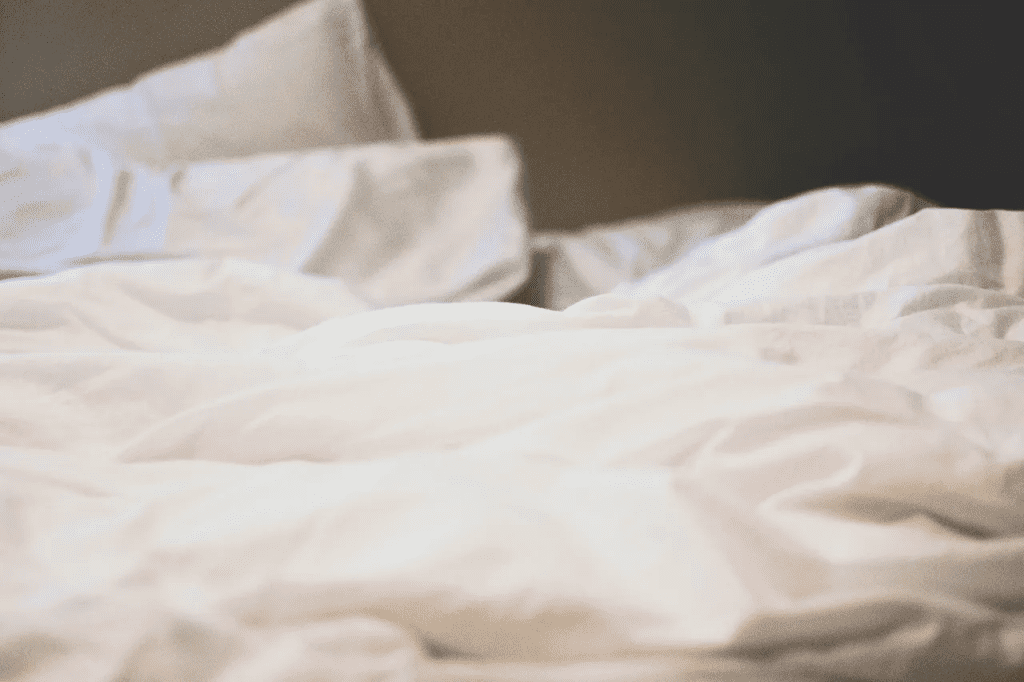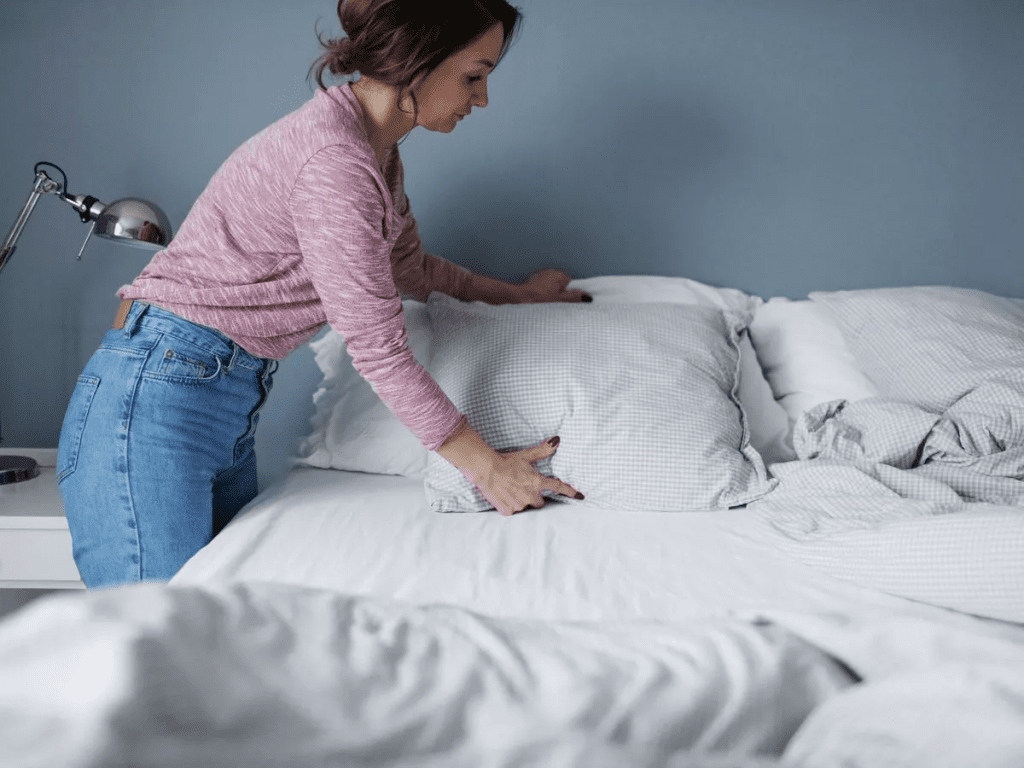Making the bed seems like a straightforward task: wash the sheets, dry them thoroughly, and neatly tuck them in. But what if someone suggests a twist—using damp sheets? It might sound strange at first, but for some, this method, often passed down through generations, is a time-saving hack with unique benefits. If your husband learned this from his mother and suggests giving it a try, let’s unpack the reasoning, benefits, and potential pitfalls of this unconventional bed-making approach.

What Is the Technique of Using Damp Sheets?
Using damp sheets means placing sheets that are not fully dried directly onto the bed. Instead of being bone-dry, they retain a slight moisture content. As the sheets air-dry on the bed, they settle and smooth out, creating a crisp, wrinkle-free look without the need for ironing.
The Historical Origins of Using Damp Sheets
This practice may have originated in times when access to modern dryers or irons was limited. In regions with high humidity or where air-drying was the norm, sheets might have been put on beds slightly damp simply because they couldn’t dry completely outdoors. Over time, families may have passed down the method as a practical way to manage wrinkles without ironing—a luxury not everyone had.
In addition, using damp sheets might have been seen as a cooling solution in warm climates, providing temporary relief from heat as the sheets dried.
Benefits of Using Damp Sheets
This method isn’t without its perks. Let’s explore why some people swear by it:
- Wrinkle Reduction
One of the biggest draws is the wrinkle-free finish. As damp sheets dry on the bed, they conform to the mattress, smoothing out folds and creases naturally. - Cooling Sensation
In warmer climates or during hot seasons, slightly damp sheets can provide a refreshing, cool feeling that makes falling asleep easier. - Time and Energy Savings
Skipping the complete drying process saves energy and time, especially if you’re line-drying sheets or trying to reduce electricity usage. - Softness
Some claim that sheets dried directly on the bed feel softer, as they avoid the potential stiffness caused by overdrying in a machine.
Potential Drawbacks of Using Damp Sheets
While the benefits are intriguing, there are some potential concerns that shouldn’t be overlooked:
- Risk of Mold and Mildew
Moisture trapped in bedding can create an ideal environment for mold and mildew, especially in humid climates or poorly ventilated spaces. This can lead to unpleasant odors and even health issues. - Uncomfortable Sleep
Not everyone finds damp sheets soothing. In cooler climates or seasons, they can feel clammy or cold, making it harder to get comfortable. - Hygiene Concerns
Damp sheets may attract dust mites or other allergens, particularly if the moisture lingers too long. Ensuring cleanliness becomes even more important with this method. - Fabric Longevity
Constant exposure to moisture could weaken fabric fibers over time, potentially reducing the lifespan of your sheets.
What Experts Say About Using Damp Sheets
Home care and textile experts have mixed opinions on this practice:
- Proponents of the Technique
Some experts acknowledge that using damp sheets can work well in specific climates, particularly dry or hot areas where moisture evaporates quickly. They also agree that it’s a convenient way to achieve wrinkle-free sheets without ironing. - Cautions from Professionals
Most experts warn against the potential for mold growth and fabric damage. They emphasize the importance of ensuring sheets dry completely within a short period and recommend avoiding the method in humid environments.

How to Use Damp Sheets Safely
If you’re curious about trying this method, there are ways to minimize the risks. Here are some practical tips:
- Ensure Proper Ventilation
A well-ventilated bedroom is crucial. Open windows, use fans, or run a dehumidifier to help the sheets dry faster and prevent mold growth. - Avoid High Humidity
This technique works best in dry climates or during seasons when the air isn’t excessively humid. - Check for Mold or Odors
Regularly inspect your sheets and mattress for any signs of mildew or odors. If you notice anything unusual, switch to fully dried sheets immediately. - Rotate the Practice
Don’t use damp sheets every time. Rotate between traditional drying methods and this technique to maintain fabric quality and reduce the risk of moisture-related issues. - Use High-Quality Sheets
Opt for breathable, natural materials like cotton or linen that dry quickly and resist odors better than synthetic fabrics.
Damp Sheets vs. Traditional Bed-Making: A Comparison
Still on the fence? Let’s compare damp sheets to the conventional approach of using fully dried sheets:
| Aspect | Damp Sheets | Traditional Dry Sheets |
|---|---|---|
| Wrinkle-Free Finish | Smooths naturally as they dry | May require ironing for a crisp look |
| Comfort | Cooling in hot climates, clammy in cold | Consistently dry and comfortable |
| Mold Risk | Higher if not dried properly | Low, assuming proper care |
| Energy Use | Saves energy by skipping full drying | Requires more drying time |
| Convenience | Time-saving for those in a rush | Slightly more time-consuming |
Your choice will depend on your personal preferences, climate, and priorities. For some, the cooling sensation and wrinkle-free finish are worth the effort; for others, the risks might outweigh the rewards.

Stories from Those Who Use Damp Sheets
Many people who have tried damp sheets report positive experiences. For instance, a homeowner in Arizona says it’s her go-to method during summer, thanks to the quick drying and cooling effects. Conversely, a couple from Florida found the practice uncomfortable and unsuitable due to the region’s high humidity.
These anecdotes highlight that the effectiveness of this technique varies widely based on personal circumstances and environmental factors.
Conclusion: Should You Try It?
Using damp sheets when making the bed is an unconventional practice with its pros and cons. It offers benefits like wrinkle reduction, a cooling effect, and time savings, but it also comes with risks such as mold growth and potential discomfort.
Ultimately, whether or not to adopt this method comes down to your personal preferences, climate, and lifestyle. If you’re intrigued, take precautions to ensure proper ventilation and cleanliness. For those who prefer the tried-and-true method, there’s nothing wrong with sticking to fully dried sheets.
No matter your choice, the goal is the same: creating a cozy, inviting bed that ensures restful sleep.



